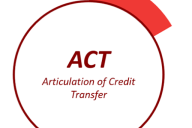You have /5 articles left.
Sign up for a free account or log in.
The national conversations in which we are engaged surrounding equitable transfer, expansion of credit mobility and the relevancy of postsecondary education to workforce skills and competencies are not isolated to this country. These conversations are tapping into a global consciousness that is gaining considerable momentum, and it would be wise for those engaged in this work within the U.S. to zoom out their focus and review the global trends, in order to gain context and perhaps adjust alignment to build on international successes.
A Global Context on Mobility
According to UNESCO figures, there are nearly 235 million students worldwide, and six million of those are studying abroad. The reality is that we live in a global economy, and the world’s education systems are also struggling to deliver equitable access to quality education and the skills required for individuals to participate fully in the global economy.
The American Association of Collegiate Registrars and Admissions Officers has always been focused on the technical and policy frameworks for domestic transfer and international mobility. These interests coalesced as the world has become more mobile and the technology has evolved beyond the AACRAO SPEEDE work initiated more than 30 years ago. In 2012, AACRAO was already in conversations in Europe with colleagues and organizations exploring the digital exchange of learner records in a secure way that aligns with the U.S. notions of learner privacy and control of their data. These conversations led to our becoming one of the founding organizations of the Groningen Declaration Network. The GDN is an international, voluntary nonprofit network that supports academic and professional digital credential mobility so that citizens worldwide are able to consult and share their authentic educational data autonomously, with the expectation of fair recognition.
Thought leaders from around the globe meet in the GDN sandbox to exchange best practices and build on the progress of stakeholders, and ambitious pilots have turned into impressive digital national education hubs to support the exchange of both traditional degrees and, increasingly, alternative credentials. Projects like CSSD in China, MyEquals in Australia and New Zealand, and MyCreds in Canada are some of the examples of GDN stakeholder engagement that have resulted in real progress that is both easing exchange and increasing access. At the 10th anniversary meeting last month in Groningen, the Netherlands, participants from around the globe celebrated the progress of the movement and challenged participants to increase the ways in which learning could be better connected to workforce, skills and competencies earned in alternative credentials could be recognized, displaced persons could gain recognition of their education and skills, and underrepresented regions could be supported and engaged to create equity of opportunity.
The Future Is Digital, Equitable and Transparent
From this desire to raise the bar for equitable access to education, UNESCO’s 2019 Global Convention on Higher Education emerged. The convention set a number of priorities, including the enhancement of the quality of higher education, growth in learner mobility, the recognition of academic credentials as a global right, international consistency in recognition procedures and increased international cooperation. To accomplish these priorities, UNESCO has challenged members to become increasingly flexible, transparent and equitable in their domestic policies and practices surrounding learner access and mobility. The priorities are driving global governments, universities and employers to innovate in new and exciting ways. Inspired by the Global Convention, the GDN and the organizations that are part of the network, we are beginning to see the emergence of the policy, pedagogy, practice and technology infrastructure required to make the global ecosystem a reality. As of September 2022, 17 countries have accepted this challenge, and several more are on the path to do the same.
So What Does This Mean for the U.S.?
It’s a little complicated. The U.S. withdrew from UNESCO on Jan. 1, 2019, and has not yet rejoined the organization. We are not officially a party to the convention, although we were represented; AACRAO was invited to be an official observer to the process in recognition of our work supporting domestic transfer and international mobility. But any U.S. participation is symbolic, since authority over education in the United States is not located at the national level. Even if we were a party to the convention, we would never ratify it, since there is no national person or body with the authority to do so.
The principles of the convention have inspired the work of AACRAO since our participation. We have thoroughly explored the concepts through symposia, white papers and institutional tool kits supporting alignment with the principles. Ostensibly, these tools have been focused on the international aspects of mobility and our work in credential evaluation and international student enrollment, but the principles have less explicitly informed our domestic work as well, as we continue to expand our work and adapt our guidance for more equitable and transparent practices for transfer.
The national conversation on transfer that has been swirling over the past several years unintentionally references the conversations that are occurring globally. The world is asking many of the same questions that we are asking: How do we support access to meaningful educational pathways? How do we support learners who not only move along pathways but also across them and across borders? How do we support those learners who have either fallen off the path or have been traditionally excluded? How do we recognize the diversity of learning that highlights skills and competencies that are required in the workforce? And how do we ensure that the economic and social mobility promised by quality educational experiences is realized by all? At AACRAO, we believe that our work in the CLR/LER space and in re-envisioning transfer are a part of the answers.
While our context is different, many of the challenges are the same, and there are valuable lessons to be learned by building on the successes of our global colleagues who are engaged in parallel work. It is possible that through global collaboration we may find solutions together.


